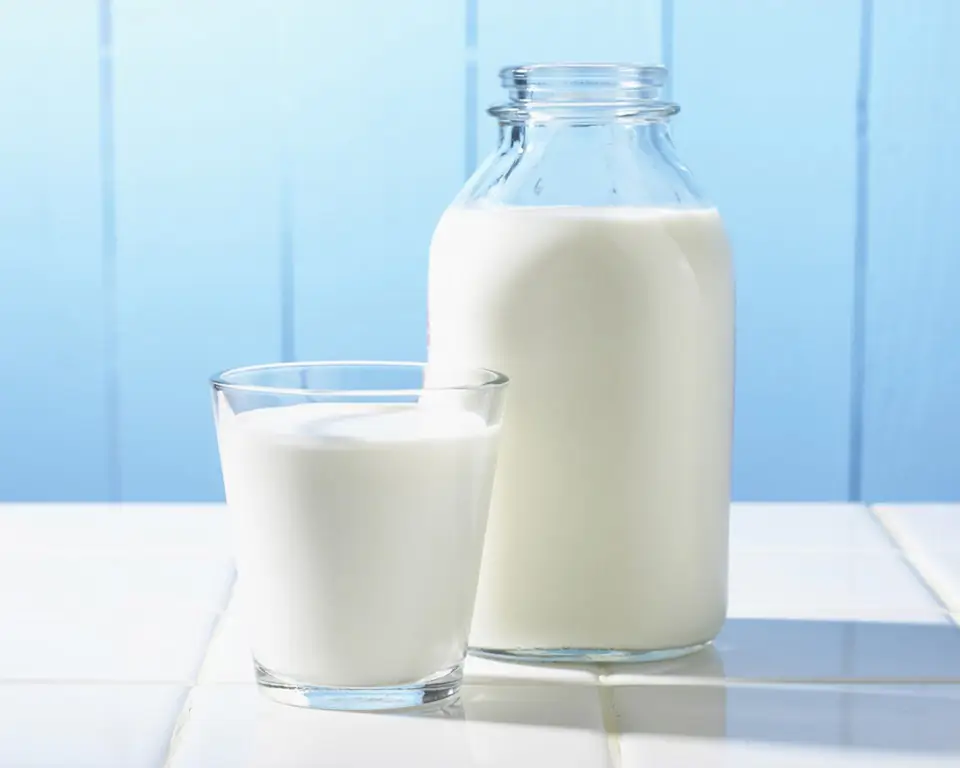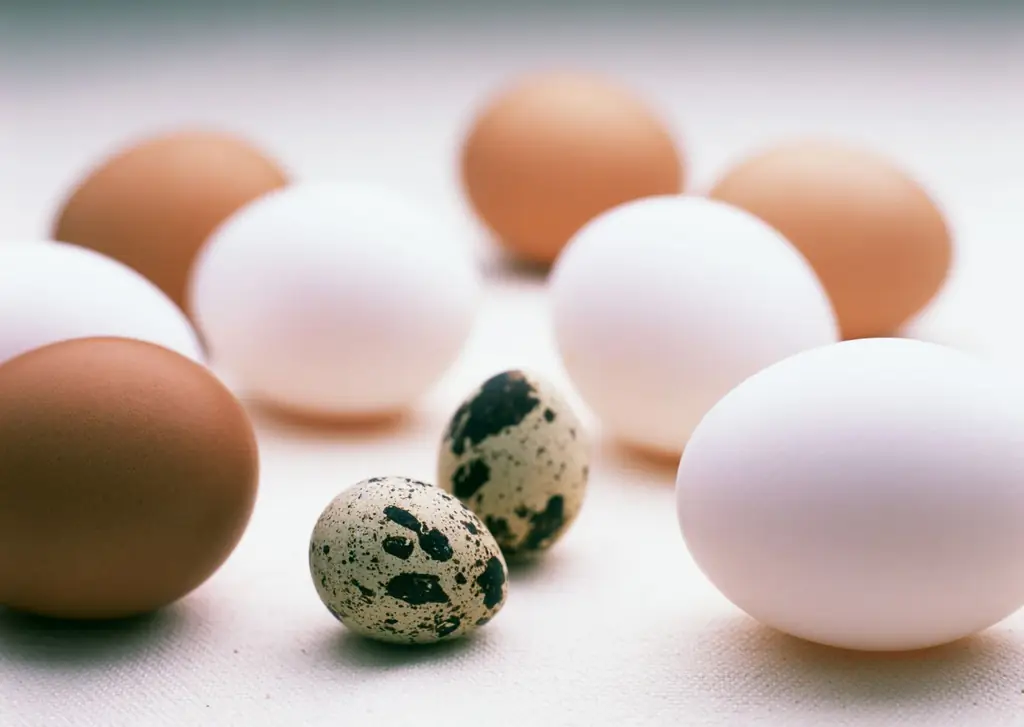
Table of contents:
- Author Bailey Albertson [email protected].
- Public 2023-12-17 12:53.
- Last modified 2025-01-23 12:41.
How to check the quality and naturalness of cow, goat and powdered milk at home

Are we always confident in the quality of the products we buy? In particular, when it comes to a drink like milk. At present, the opinion about the benefits of milk for the human body is not so unambiguous, because the purchased version can contain a huge amount of impurities and additives harmful to the body, simply leveling all those valuable qualities of a natural product for which we love it so much. But there are several proven ways to determine the freshness and quality of a dairy product that are available to us at home.
Content
-
1 How to check the freshness of milk at home
- 1.1 Method with soda
- 1.2 Boil method
- 1.3 Determine freshness drop by drop
-
2 Effective ways to check the naturalness and quality
- 2.1 Detecting the presence of starch
- 2.2 Determine if there is water in milk
- 2.3 Antibiotics and other impurities
- 2.4 How to check the fat content of a product
- 3 Three criteria for assessing the quality of milk powder
- 4 Video: how to determine the naturalness of milk - "Home laboratory"
How to check the freshness of milk at home

Milk is a product unique in its composition that is useful for a person at any age
The freshness of cow's and goat's milk is tested in the same way, although the composition of these products is slightly different. In goat, unlike in cow, there are no caseins that cause allergic reactions. However, it is important for testing that both of these species contain proteins.

It is possible to determine the exact quantitative composition of proteins in milk only under laboratory conditions.
Soda method
- Pour half a glass of milk.
- Pour in ½ tsp. soda.
- We look at the reaction. If foam appears, the milk is not fresh.
Boil method
- Pour some milk into a saucepan.
- We put it on fire and wait for it to boil.
- If the liquid is curdled, the milk is spoiled.
Determining freshness drop by drop
Homemade milk is distinguished by a high percentage of fat content, and therefore you can check its freshness in the following way:
- We lower a toothpick into a container with milk.
- We drip liquid onto the nail.
- If the drop has not spread, the product is fresh. And if it spreads, then there is water in such milk, and it is not fresh.
The surest tool for determining if milk is sour is the nose. A strong sour smell is a clear sign of staleness of the product. You also need to look at the consistency and uniformity of the liquid. Irregular thickening or the appearance of white blotches, similar to flakes, indicates that the milk has deteriorated.
Effective ways to check naturalness and quality

To determine the quality and naturalness of milk, you only need one glass of drink
The antagonists of store-bought dairy products unanimously shout that all kefir, curds and, of course, milk on the shelves are made from powder, that is, from powdered milk. Perhaps the situation is not so straightforward, but if you decide to buy products in a supermarket or are just looking for a supplier of fresh milk, it will be useful to know about some ways to check the quality of a natural product . The very first way to determine the naturalness of milk is to evaluate its color. If the product is yellowish, then this is the result of the work of the mammary glands of a cow or goat. But white or white with blue color indicates the presence of impurities. Inventive manufacturers add lime, chalk, flour, starch to milk to improve the appearance of the product.
Detecting the presence of starch

The surest way to determine if there is starch in milk is to drop iodine into a healthy product.
In the manufacture of products, starch is often added to skim milk in order to impart thickness in this way. Iodine is required to determine this additive in the drink.
Instructions:
- Pour some milk into the glass.
- We drip iodine.
- We look at the reaction. If the liquid has acquired a bluish tint, it means that there is starch in the milk. If yellowish circles have gone, then you are in luck - there are no additives in such milk.
Determine if there is water in milk
In addition to the method described above for determining the freshness and presence of water in a natural drink, there is another proven option - with the help of alcohol. But this method is suitable only for cow's milk, since the reaction requires the casein contained in it.
Instructions:
- Mix milk and alcohol in a 1: 2 ratio. Alcohol can be replaced with vodka, but only with high quality, otherwise the additives will interfere with the reaction.
- Shake the resulting mixture for 1 minute.
- Pour the liquid onto a saucer.
-
If flakes are formed after 5-6 seconds, then such a product contains a lot of casein, which means that the milk is of high quality. If the reaction took longer and there are very few flakes, then the product has a lot of water.

A three-liter jar of water to which milk was added The longer it takes to form milk flakes in water, the lower the quality of the product.
You can also check if there is foreign liquid in the milk with warm water. This technique can be used for both cow and goat milk.
Instructions:
- Pour warm water into a glass.
- We begin to slowly pour in the milk.
- If the trickle immediately mixes with water, then the product is diluted, and if it collects in a clot at the top of the glass, then it is natural.
Antibiotics and other impurities

Real milk has a dense consistency
In order to keep milk longer, antibiotics are added to it. It is very easy to check their presence in the purchased product.
Instructions:
- We leave the drink in a container with a loosely closed lid for a day in a warm place.
- High-quality milk will begin to ferment and will resemble jelly. But the drink with additives will remain unchanged. This is due to the fact that antibiotics slow down the growth of lactic acid bacteria contained in a natural product.
Dairy producers are trying in every way to extend the shelf life of goat and cow milk. To do this, soda or salicylic acid is most often added to it. You can determine the presence of these impurities using litmus paper:
- Remembering the school chemistry course, we lower the indicator into milk.
-
We evaluate the result: if there is soda, then it will turn blue, and if there is acid, then red.

Two glasses with bluish and reddish milk If there is a lot of starch in the milk, then it becomes bluish, and if there is acid, then the product acquires a pink tint.
In principle, it is possible to reveal the presence of any impurities using acetic acid:
- We drip acid into a glass of milk.
-
There are bubbles - there are impurities.

Glass and jug of bubbling milk If bubbles appear in the milk when acid is added, then there are clearly impurities in it.
Unscrupulous milk suppliers sometimes hide from consumers the fact that it is made from skim milk powder. In this case, you can test the drink for naturalness with nitric acid (it is sold in specialized stores of chemical reagents).
Instructions:
- Pour milk into a glass.
- Add acid from the test tube drop by drop.
- If the product starts to turn yellow and then turns orange, then it is not natural.
But sometimes there is no need to purchase a reagent; it is possible to determine the fact of milk recovery from powder by eye. When shaken in glassware, opaque particles remain on the walls.
How to check the fat content of a product
Any of the water tests will work to check the fat content. After all, if the product is diluted, then its fat content decreases significantly. But there is one more test:
- We take two glasses, pour milk into one.
- Pour liquid from one to another.
- We evaluate the result - rich milk will not leave streaks and marks on the walls of the dishes, but diluted milk will smear on the glass. The same reaction will be with milk to which palm oil has been added.
Three criteria for assessing the quality of milk powder

Powdered milk is in no way inferior in its quality composition to natural, if only it has been properly prepared
We all know that milk can be natural and reconstituted, that is, obtained by diluting it in dry water. We have figured out the definition of the quality of the first type, now it's time to talk about how to assess the dry condition. To do this, you need to evaluate the powder according to 3 criteria.
- Colour. The product should be white with a light cream shade. The presence of brown or mottled blotches indicates that the milk has burnt during the preparation process. As a result, it will taste good.
- Consistency. Milk powder should be homogeneous. A small number of lumps are allowed, but they fall apart easily if rubbed with your fingers. Large, dense lumps indicate that the milk was stored in a very humid environment. The product must not have a caked appearance. This is usually the case for milk packed in plastic bags. Such packaging leads to the fact that the product "suffocates", the milk acquires a bitter aftertaste.
-
No sediment. When diluting milk with water, there should be no clots at the bottom. Otherwise, the original product was of poor quality, either low in protein or intended for pet food.

A spoonful of milk powder over a glass of water High quality milk powder dissolves in water without residue
Video: how to determine the naturalness of milk - "Home laboratory"
The emergence of more and more new ways to make milk look like a natural product leads to the fact that consumers have to try different tricks to test a healthy drink. So, if you managed to find a supplier whose products have passed all the tests with flying colors, then you are very lucky. Be alert and healthy!
Recommended:
How To Choose The Right Olive Oil In The Store: Signs Of A High-quality Cold-pressed Product And Other Types + Photos And Videos

Olive oil is a valuable nutritious product. What benefits does it bring to the body? How to distinguish and choose the right olive oil in the store?
How To Check The Freshness Of Eggs At Home And In The Store (on Water And Other Methods) + Photos And Videos

How to check the freshness of eggs before buying by external signs and at home. What can be the result of negligence? What storage conditions should be provided?
How To Check Cottage Cheese For Quality And Naturalness At Home With Iodine And Not Only + Photos And Videos

Where to stop the choice - on cottage cheese or curd product? Description of simple ways to check the quality and naturalness of a product at home. Video
How To Ignite A Cast Iron Pan Before The First Use And In Other Cases: Salt, Oil And Other Methods + Photos And Videos

How to ignite cast iron pans. Quick ways to get rid of engine oil residues, rust and carbon deposits
How To Defrost Meat At Home Quickly And Correctly In A Microwave, Hot Water, Oven And Other Methods + Photos And Videos

How to defrost meat at home. Methods in the microwave and without it, in hot or cold water, in the refrigerator and others. Pros and cons of methods
